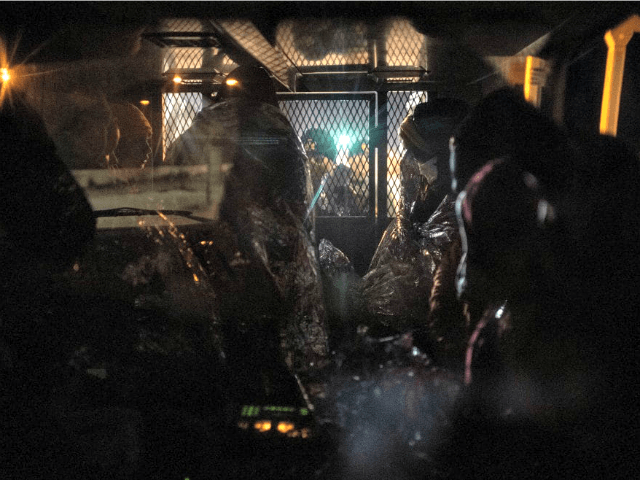Traffickers have established a low-cost bus route through Mexico to deliver thousands of economic migrants from Central America to U.S. blue-collar jobs, according to the Washington Post.
The business model is being called the “conveyor belt” system, and large groups of customers are charged from $2,500 to $7,000 per adult and child, depending on amenities, says the Washington Post:
Paying up to $7,000 per adult with child, families are transported to staging areas at ranches and hotels in southern Mexico, where they are organized into bus groups and rushed north along Mexican highways, “stopping only for food, fuel and bathroom breaks,” according to the U.S. law enforcement documents.
…
Within 72 hours of leaving the staging areas, the buses arrive at predetermined drop-off points within walking distance of the U.S. border. Migrant families are clustered into groups that have at times exceeded 300 adults and children, and they walk directly across the border, in some cases stepping over barriers in long, orderly lines. They then surrender to U.S. Border Patrol agents and initiate asylum claims.
The bus networks boost the cartels’ profits by maximizing production and minimizing overhead costs, such as the costs of stash houses and gunmen, the Washington Post notes:
By using the direct-bus method, smugglers can eliminate the need for stash houses along the border where they would normally keep migrants under the watch of armed guards before sneaking them across the border. The express routes “minimize overhead and maximize capacity,” according to the U.S. documents, allowing smugglers to reduce “operational costs to a minimum.”
The bus network exists because progressive judges, plus Republicans and Democrats, have cut a series of loopholes in popular U.S. border laws.
By creating or tolerating the loopholes, the judges and Congress are deliberately allowing the cartels to convert their many illegal-immigrant partners into legal asylum-seeking clients — so imposing huge workplace and taxpayer costs on ordinary Americans.
The judges’ loopholes, for example, require border officials to quickly release migrants who bring their children with them across the border. The resulting catch-and-release policy allows the migrants to get through the border wall and into U.S. jobs in one day.
Judges have also moved quickly to block any countermeasures by the U.S. government. For example, a revision of “credible fear” asylum rules set by former Attorney Gen. Jeff Sessions was blocked nationwide by a judge even before a trial. The block ensures that nearly all migrants can get released into the United States by merely asking for asylum, regardless of whether they have grounds for seeking asylum.
Similarly, GOP and Democratic politicians have done little to slow the rapid growth in migrants. In fact, the February budget deal provides hundreds of millions of dollars in aid, transportation, and welfare for migrants as they cross the border. The budget deal also reduces the number of jail spaces where migrants can be kept until their asylum claims are heard.
The throughput of migrants is rapidly increasing as illegals working in the United States use the new bus network to order the delivery of their wives and children from Central America.
Officials fear the migration will reach almost one million this year, effectively creating a huge population movement from Central American into the United States, despite the hundreds of billions of dollars spent on national defense each year.
The Congress is also not pressuring the Mexican government to shut down the “conveyor belt” trafficking network.
The inflow of economic migrants is being welcomed by business interests because the extra workers will help shrink rising wages now being paid to blue-collar Americans. Wages rose by four percent in the 12 months up to February 2018, after decades of low wage, high immigration economic policies.
The migrants are also being welcomed by business because they will buy goods and services from U.S. business. The extra population is also good for real estate owners because it helps push up Americans’ rents in Los Angeles and other destination cities for migrants.
The inflow is also good for government agencies because it adds many thousands of poor children to welfare rolls and to U.S. schools — regardless of their impact on the children of blue-collar Americans.
Business groups also favor the semi-legal inflow because it helps distract public attention from other painful issues — such as legal migration, poverty, trade, and wages — that could have a larger impact on their bottom line.
Read it all here.

COMMENTS
Please let us know if you're having issues with commenting.